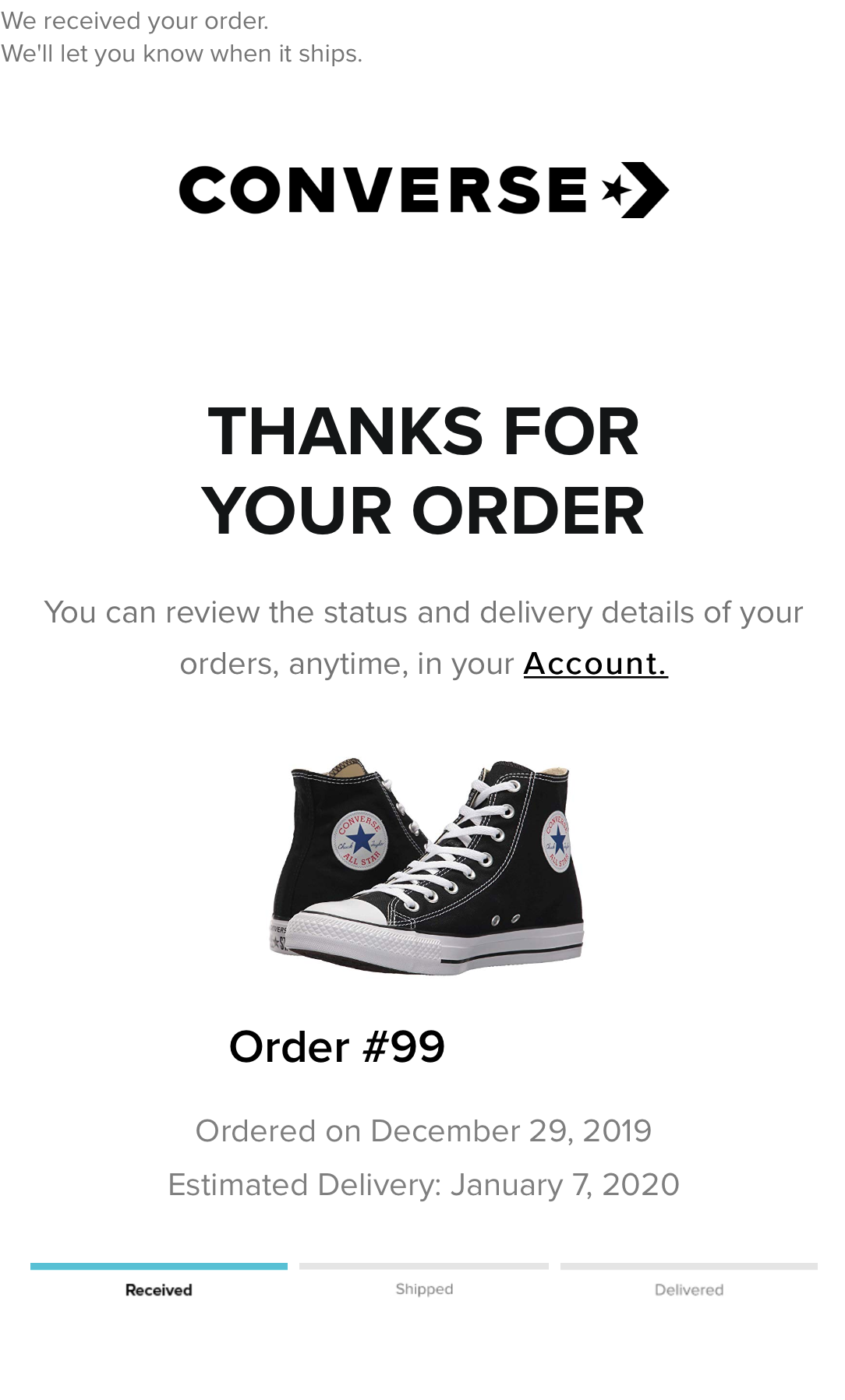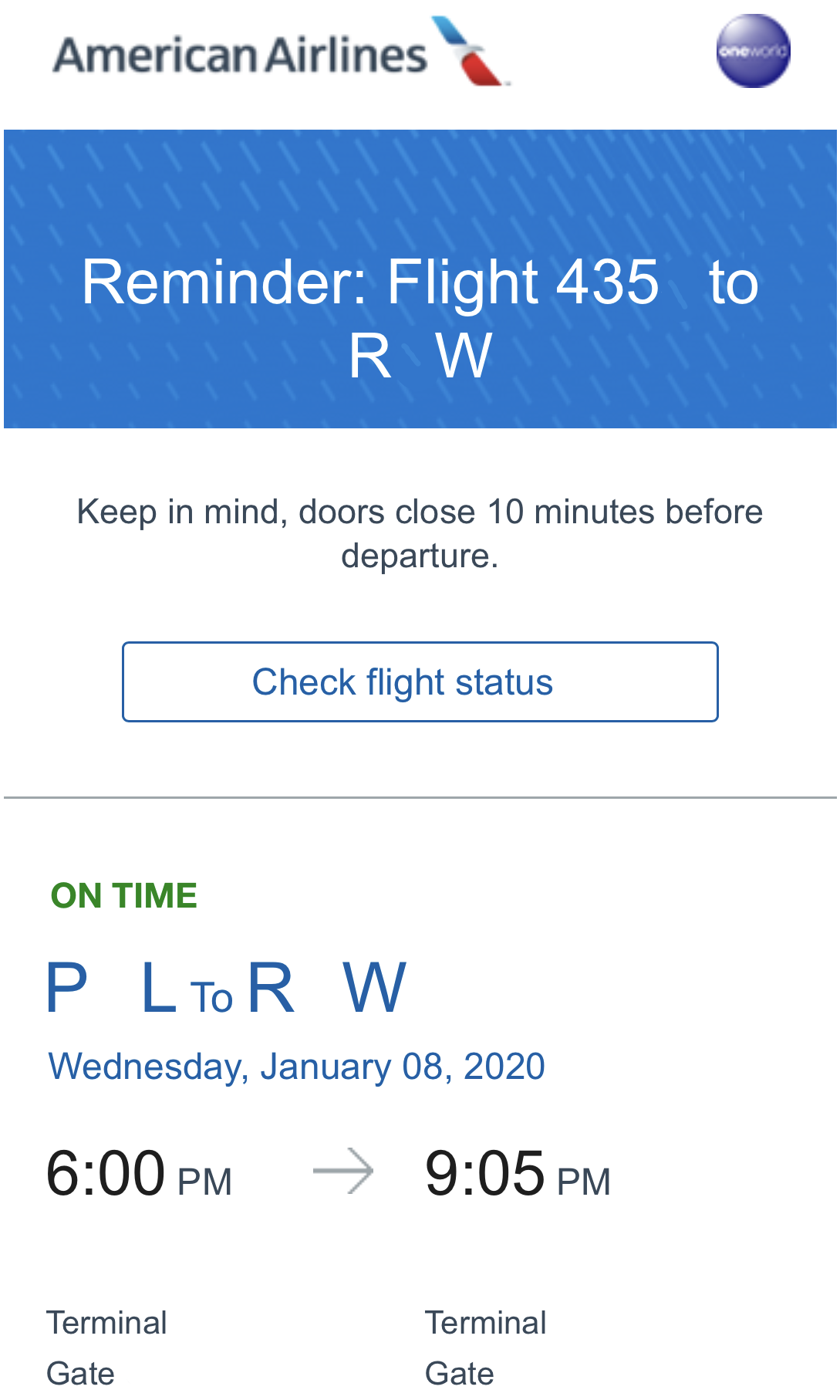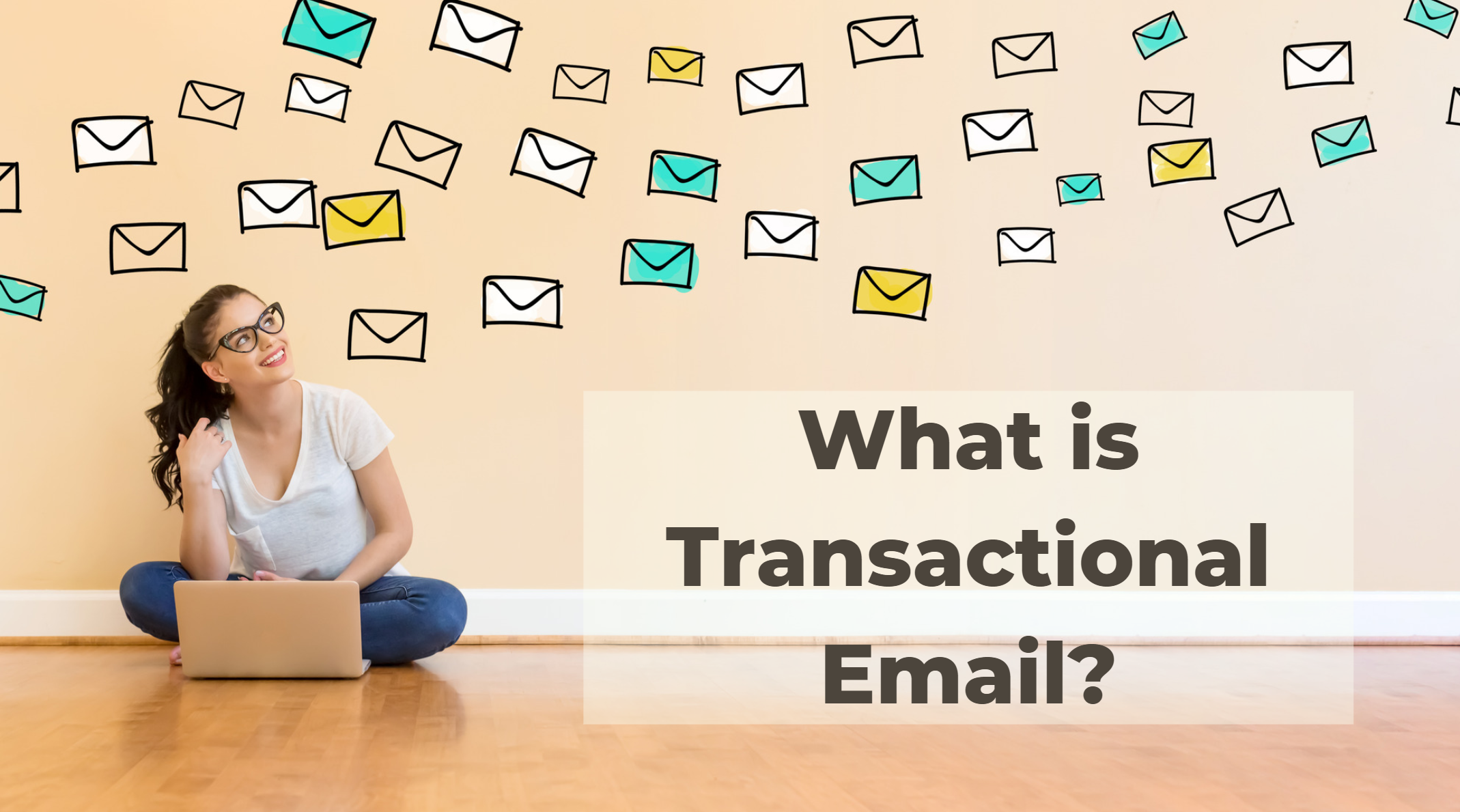Transactional Email Definition
A transactional email (sometimes referred to as triggered or programmatic email) is a type of email that is prompted by a recipient based on a given action through an application or website. When you think of transactional email you should think of things like password resets, order confirmations, email receipts, shipping information, etc.
Transactional email is typically more essential than marketing email because it often contains important, timely and often confidential information intended for the recipient. Due to the nature of transactional email, it’s important for senders to have a solid email infrastructure so these essential emails get to the recipient on time and untouched.
Transactional Email Examples
In the age of eCommerce, you have more than likely received lots of transactional emails whether you have ordered something online, downloaded a new app, reset your password, or opted for an email receipt at a checkout.
Below is an example of a standard order confirmation. A good immediate order confirmation email after a customer purchases something helps the customer feel better about their purchase and reassures them that their transaction is being processed. Have you ever purchased something online and waited for a confirmation email that never came or came hours later? It’s a bad feeling, enough to make shoppers look elsewhere next time.

Here is a flight confirmation from American Airlines. The email is very important to get on time so travelers can have a log of everything they need to catch their flight. The “check flight status” button is also a great use of space to provide travelers with all information they could possibly need on their trip.

Transactional Email as a Revenue Generator
When businesses think of email as a way to generate revenue, they almost always think marketing. Marketing email is a more direct way to get new products, services, and promotions to an audience and bring in new customers. So if marketing email is so effective at generating revenue, what is transactional email good for? Transactional email is just as important, but it is often overlooked because it is more indirect in terms of generating revenue. Transactional email is a powerful tool in customer retention. While the revenue from transactional email may not come directly from an email, it comes long term, by building customer loyalty and trust.
As mentioned before, it’s vital that transactional email gets to the customer in a short period of time and the information is accurate. We are at a point in time where it is unacceptable for customers to receive late transactional emails or to never receive them at all. It is expected from a business that these emails are delivered successfully and if they aren’t, customer expectations will not be met.
Aside from simply letting customers down and losing trust, a poor shopping experience will send customers to the nearest competitor. Trust and loyalty go a long way in business so no matter what products or services you sell, good transactional emails are a great way to build that relationship and retain your valued customers.
How to Send Transactional Email
When it comes to actually sending the transactional email, its should be obvious at this point that timeliness and accuracy are two extremely important points. But if you have experience with high volume email sending, you know how challenging it is. Managing your IP reputation, perfecting the endless science of deliverability – high volume email is hard. That’s why it’s important to pick the best transactional email service that aligns with your needs and goals.
Working with a transactional email service like SocketLabs helps take the guess work out of the deliverability aspect. Between our MTA technology and our team of deliverability consultants, sending transactional email that is both on-time and accurate is exactly what we have been helping people do for the last ten years. If you aren’t ready to work with a SocketLabs deliverability consultant yet, check out our blog on the top transactional email best practices!








